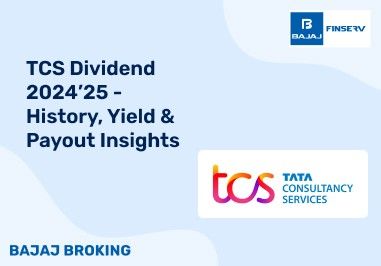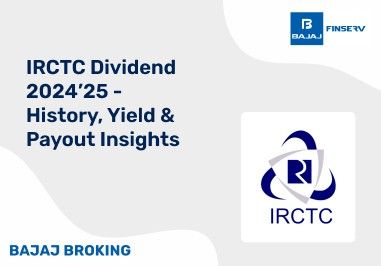Retirement may seem far off, but without early planning, our golden years could become financially challenging. This is where the NPS (National Pension Scheme) contribution plays a crucial role in securing our future. With the rising cost of living and inflation, having a passive income source post-retirement is no longer a luxury but a necessity.
The NPS contribution provides individuals with a disciplined and flexible savings avenue, ensuring financial independence in later years. By making regular contributions, investors can build a substantial retirement corpus while benefiting from tax advantages and market-linked returns. Whether you are just starting your career or nearing retirement, understanding the significance of this scheme can encourage long-term wealth creation.
Even if retirement is decades away, learning about the National Pension Scheme contribution today might prompt you to take the first step toward securing a stress-free and comfortable future.
NPS Contribution Online
Launched in 2004, the National Pension Scheme (NPS) is a voluntary investment scheme regulated by the Central Government and the PFRDA (Pension Fund Regulatory and Development Authority). Initially designed for government employees, the scheme was extended in 2009 to include individuals from the private sector. However, military personnel are not eligible for NPS.
The primary goal of NPS is to encourage systematic retirement savings, ensuring financial security for Indian citizens in their post-retirement years. Subscribers contribute regularly to their pension accounts, with the flexibility to withdraw a portion of the accumulated funds at retirement while using the remaining amount to purchase an annuity for a steady income stream.
NPS offers a diversified investment structure, comprising four asset classes: corporate debt, government bonds, equity, and alternative investment funds. Additionally, subscribers have access to multiple portfolio managers and investment strategies, allowing them to tailor their retirement plans according to their financial objectives and risk tolerance.
With the advent of NPS contributions online, managing pension investments has become convenient and accessible. The online platform allows subscribers to make contributions seamlessly through various digital payment methods, including net banking, UPI, debit/credit cards, and mobile wallets. This system ensures uninterrupted contributions, enhancing financial discipline and promoting long-term savings. Subscribers can also track their investments, switch fund managers, and modify asset allocations through the digital portal, providing greater control and transparency over their retirement funds.
The introduction of online contributions has significantly increased the adoption of NPS, making it a preferred retirement savings option for many individuals.
Benefits of NPS Contributions
National Pension Scheme contributions offer a blend of tax advantages, financial security, low cost, flexibility, and a steady post-retirement income stream. These features make NPS an attractive option for those who seek a structured and disciplined approach to saving for retirement while enjoying the benefits of a diversified investment portfolio. Here are some of its advantages:
Tax Benefits and Deductions:
NPS contributions offer significant tax advantages. Contributions made are eligible for tax deductions under Section 80CCD(1) and 80CCD(1B) of the Income Tax Act, in addition to the overall deductions available under Section 80C. This helps reduce your taxable income while encouraging disciplined, long-term savings for retirement.
Long-Term Financial Security:
By investing in NPS, you build a corpus that is specifically aimed at providing income during your retirement years. The system promotes regular savings and compounding over time, ensuring you have a substantial fund to rely on when you retire, which can help maintain your lifestyle post-retirement.
Low-Cost Investment Platform:
One of the distinctive advantages of NPS is its low fund management charges compared to other investment avenues. The minimal administrative fees mean a larger portion of your contributions goes towards building your retirement savings rather than being eroded by high expenses.
Flexibility and Choice in Investment:
NPS allows subscribers the flexibility to choose between various investment options and asset classes like equity, government bonds, and corporate bonds. This enables investors to align their risk appetite with their investment strategy, potentially enhancing returns over time while maintaining a balanced portfolio.
Portability and Continuity:
NPS accounts are portable across jobs and locations, allowing you to continue your contributions irrespective of changes in your employment status or geographic location. This continuous investment ensures that your retirement corpus grows steadily without interruption, no matter where your career takes you.
Attractive Annuity Options:
At the time of retirement, a significant portion of your NPS corpus is converted into an annuity, providing you with a steady income stream during your golden years. This regular pension can help manage day-to-day expenses and offers peace of mind by ensuring financial stability when you are no longer earning a regular salary.
Discipline and Long-Term Planning:
Regular contributions to NPS instill a habit of disciplined saving. This regularity, coupled with the structure of the pension scheme, encourages long-term financial planning, reducing the risk of financial instability in later years. It serves as a proactive approach to ensuring that you are well-prepared for retirement challenges.
How to Contribute to NPS Online?
With digital advancements, contributing to NPS online has become a seamless and hassle-free process. Below is a step-by-step guide to making online contributions to your NPS account:
Step 1: Understand NPS Tier Types Before ContributingBefore proceeding with an online contribution, it’s important to understand the two types of NPS accounts:
Once you know which account you want to contribute to, proceed with the following steps.
Step 2: Visit the Official NPS Portal
Start by navigating to the official NPS website or the designated Central Recordkeeping Agency (CRA) portal (such as NSDL or KARVY). These websites serve as the primary access points for managing your NPS account. The portal is designed to offer a user-friendly interface where you can register, contribute, and monitor your investments.
Step 3: Register or Log into Your Account
If you are a new subscriber, begin by registering for an NPS account. During registration, provide personal details such as your name, date of birth, PAN number, Aadhaar number, and contact information. For existing subscribers, simply log in using your credentials. Registration typically involves creating a secure password and verifying your email or mobile number, ensuring your account remains safe and confidential.
Step 4: Complete the KYC Verification Process
Before you can make contributions, ensure that your KYC details are up-to-date and verified. The KYC process is essential for compliance and includes submitting identity proofs, address proofs, and other relevant documents. Some portals might allow you to complete the KYC online by uploading scanned copies of your documents, while others may redirect you to an authorized KYC Registration Agency (KRA) for in-person verification.
Step 5: Link Your Bank Account
For seamless contributions, link your bank account with your NPS account. This is typically done through an online form where you enter your bank account number, IFSC code, and other relevant banking details. This step is crucial as it facilitates electronic fund transfers, making the contribution process both swift and secure.
Step 6: Select Your Contribution Method
NPS online offers multiple payment options such as Net Banking, UPI, or debit/credit card. Choose the method that is convenient for you. Each option is designed with robust security protocols to protect your financial data. The portal will guide you through the process of authorizing the payment, ensuring that your contribution is processed efficiently.
Step 7: Enter the Contribution Amount and Frequency
Once your account setup is complete, specify the amount you wish to contribute and decide if it will be a one-time deposit or a recurring contribution. NPS supports periodic contributions that can be automated, making it easier to build your retirement corpus over time. This flexibility allows you to adjust contributions based on your financial goals and capabilities.
Step 8: Confirm the Details and Authorize the Payment
Before finalizing your contribution, review all the details provided. Confirm the contribution amount, payment method, and any other relevant information. Once verified, authorize the transaction. The system might prompt you to authenticate the payment using an OTP or another secure verification method.
Step 9: Receive Confirmation and Transaction Receipt
After a successful transaction, you will receive a confirmation message along with a digital receipt via email or SMS. This receipt serves as proof of your contribution and is useful for tracking your investments and for future reference, including tax purposes.
Step 10: Monitor Your Investment and Plan for Future Contributions
Post-contribution, regularly log in to your NPS account to monitor the performance of your investments. The online portal provides comprehensive details such as balance, asset allocation, and transaction history. Use this information to plan future contributions, adjust investment strategies, and ensure that your retirement planning stays on track.
By following these detailed steps, you can easily contribute to NPS online, ensuring a streamlined, secure, and efficient process that enhances your retirement planning efforts.
Minimum and Maximum Contribution Limit
Here is a table outlining the minimum and maximum NPS contribution limits:
Account Type
| Minimum Contribution per Transaction
| Minimum Annual Contribution
| Maximum Contribution
|
Tier I (Mandatory Retirement Account)
| ₹500
| ₹1,000 per year
| No upper limit
|
Tier II (Voluntary Savings Account)
| ₹250
| No minimum annual contribution required
| No upper limit
|
Tax Benefits of NPS Contributions
National Pension Scheme contribution reward with multiple benefits. Here are the following:
Tax Benefits for Employees on Self-Contribution
Primary Deduction Under Section 80CCD(1):
Employees contributing to NPS can claim a tax deduction equal to up to 10% of their salary (Basic + DA) as per Section 80CCD(1). This benefit is part of the overall tax deduction ceiling of ₹1.50 lakh available under Section 80CCE.
Additional Deduction Under Section 80CCD(1B):
On top of the deduction available under Section 80CCD(1), employees can also secure an additional tax deduction of up to ₹50,000 under Section 80CCD(1B). This extra benefit is available beyond the standard overall ceiling of ₹1.50 lakh under Section 80CCE.
Tax Benefits for Employees on Employer Contributions
Employer Contribution Deduction Under Section 80CCD(2):
Contributions made by an employer toward an employee’s NPS account are also eligible for tax deductions. The tax deduction is up to 10% of the employee's salary (Basic + DA). For contributions made by the Central Government, the deduction can extend to 14%. This benefit is available over and above the ₹1.50 lakh limit specified under Section 80CCE.
Tax Benefits for Self-Employed Individuals
Self-Contribution Deduction Under Section 80CCD(1):
Self-employed individuals can claim a tax deduction on their NPS contributions up to 20% of their gross income. This benefit is available within the overall limit of ₹1.50 lakh under Section 80CCE.
Additional Deduction Under Section 80CCD(1B):
Similar to salaried employees, self-employed persons are also eligible for an extra deduction of up to ₹50,000 under Section 80CCD(1B) on top of the overall ceiling of ₹1.50 lakh under Section 80CCE.
Tax Benefits on Partial Withdrawals from NPS
Exemption on Partial Withdrawals:
NPS allows for tax exemptions on partial withdrawals. Specifically, up to 25% of the self-contribution amount can be withdrawn tax-free, subject to certain conditions as defined by the PFRDA under Section 10(12B).
Tax Benefit on the Purchase of an Annuity
Annuity Purchase Exemption:
Upon reaching the age of 60 or at the time of superannuation, subscribers can use their NPS corpus to purchase an annuity. The expenditure incurred in purchasing the annuity is eligible for tax exemption under Section 80CCD(5). However, any subsequent income received from the annuity will be taxable as per Section 80CCD(3).
Tax Benefit on Lump Sum Withdrawal
Tax Benefits for Corporates/EmployersCorporate Deduction for Employer Contributions:
Corporates or employers making contributions towards their employees' NPS accounts can claim a tax deduction. This deduction is recognized as a business expense and is allowable up to 10% of the employee’s salary (Basic + DA) under Section 36(1)(iv)(a) of the Income Tax Act.













